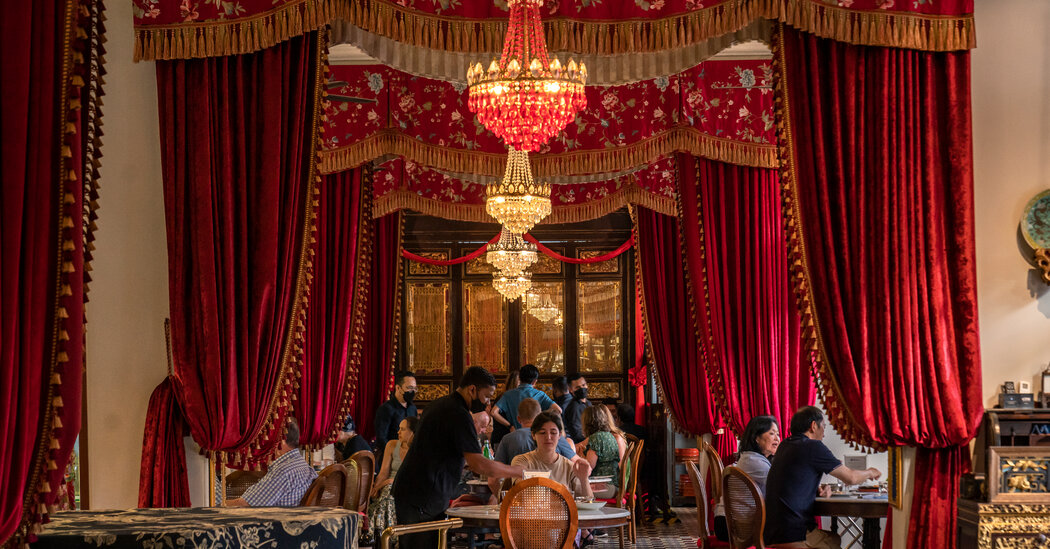“Try this way,” says Zainal Abidin, an affable manager at the Prestige in George Town, Malaysia, cocking his head to one side. Mr. Zainal is showing me around the hotel, which is named after the 2006 Christopher Nolan film about two rival magicians. I’m supposed to see an illusion in which the corridor entrance transforms into a mirror, but it’s not coming.
“Or this way,” he says, bending his head to the left, then back again. I follow suit — we must look like a couple of nodding dashboard dogs — and abruptly the mirror appears. I take a step back.
Mr. Zainal laughs, and I venture that this effect must be confusing for guests returning late from one of George Town’s many bars. But Mr. Zainal shakes his head: “Guests love it. The corridors are actually very popular for Instagram shoots,” he says.
Most travelers know Malaysia for the beaches of Langkawi, the iconic twin towers of Kuala Lumpur or the rainforests of Borneo. But the colonial port city of George Town on the island of Penang, just off the Malay Peninsula’s west coast, has a magic all its own. The core of the city — about a square mile of twisting alleys lined with two- and three-story rowhouses that double as storefronts, known locally as shophouses — is a UNESCO World Heritage site.
The listing describes George Town as “a unique architectural and cultural townscape without parallel anywhere in East and Southeast Asia,” a product of 500 years of trade and exchange between East and West. The island was annexed by the British in 1786 and flourished as a trading entrepôt, with Chinese and Indian immigrants mixing with the local Malay population to produce a vibrant community in which English was (and still is) the lingua franca. The city was eclipsed commercially by ports like Singapore many decades ago, but Penangites, as they call themselves, remain an inventive, multicultural community and are, in general, fiercely proud of their city.
For visitors, all this leads to the serendipitous pleasure of wandering the warren of narrow lanes looking to stumble across another wonderfully photogenic facade painted in a mixture of delicate pastels with red or black louvered wooden doors and elaborate carved gold inlays.
There’s also the possibility that one of those doors will lead to the perfect cup of coffee. Or a plate of fried noodles. Or a one-star Michelin restaurant serving Nyonya cuisine, a fusion of Chinese, Malay and Indonesian cooking that the Michelin Guide calls…
Click Here to Read the Full Original Article at NYT > Travel…
